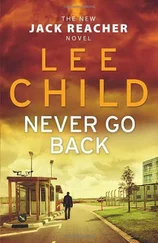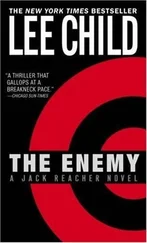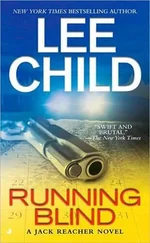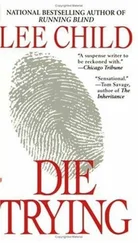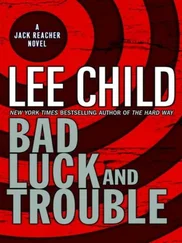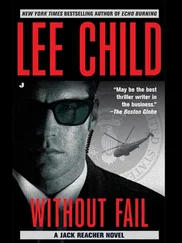Lee CHILD - Faking a Murderer
Здесь есть возможность читать онлайн «Lee CHILD - Faking a Murderer» весь текст электронной книги совершенно бесплатно (целиком полную версию без сокращений). В некоторых случаях можно слушать аудио, скачать через торрент в формате fb2 и присутствует краткое содержание. Год выпуска: 2019, ISBN: 2019, Издательство: Simon & Schuster, Жанр: Триллер, Боевик, на английском языке. Описание произведения, (предисловие) а так же отзывы посетителей доступны на портале библиотеки ЛибКат.
- Название:Faking a Murderer
- Автор:
- Издательство:Simon & Schuster
- Жанр:
- Год:2019
- ISBN:978-1-9821-3957-5
- Рейтинг книги:5 / 5. Голосов: 1
-
Избранное:Добавить в избранное
- Отзывы:
-
Ваша оценка:
- 100
- 1
- 2
- 3
- 4
- 5
Faking a Murderer: краткое содержание, описание и аннотация
Предлагаем к чтению аннотацию, описание, краткое содержание или предисловие (зависит от того, что написал сам автор книги «Faking a Murderer»). Если вы не нашли необходимую информацию о книге — напишите в комментариях, мы постараемся отыскать её.
, bestselling authors Kathy Reichs and Lee Child – along with their popular series characters Temperance Brennan and Jack Reacher – team up for the first time ever.
Faking a Murderer — читать онлайн бесплатно полную книгу (весь текст) целиком
Ниже представлен текст книги, разбитый по страницам. Система сохранения места последней прочитанной страницы, позволяет с удобством читать онлайн бесплатно книгу «Faking a Murderer», без необходимости каждый раз заново искать на чём Вы остановились. Поставьте закладку, и сможете в любой момент перейти на страницу, на которой закончили чтение.
Интервал:
Закладка:
Brennan had explained the situation by phone. They got straight to it. As Brennan talked, Luong listened, ears sharp. Attorney ears. Now and then she asked a question.
“You’re certain you’ve never met Mr. Yeow?”
“Absolutely. But I know the connection these yaks have jumped on. Yeow was investigating a suicide that occurred back in the eighties. A man named Calder Massee.”
Luong’s eyes rounded in surprise. “The air force bird colonel who shot himself in Germany?”
“Yes. Massee was discovered dead in his car behind the Hotel Bremerhof in the town of Kaiserslautern in March of 1987. The coroner’s ruling was death by self-inflicted gunshot wound.”
“Who performed the autopsy?”
“A German pathologist.”
“Were you even out of grad school in ’87?”
“Just. But I wasn’t involved in the original analysis.”
Brennan worked the keys on her laptop. Which she’d managed to retain thanks to Luong’s intervention.
“The Massee family went ballistic. They insisted the suicide finding was a cover-up because Calder had been wrongly accused in an espionage case. They claimed he’d been shot in the back of the head, execution style. Said they had an eyewitness to prove it.”
“I remember this.” Luong was jotting notes on a yellow legal pad. “Some relatives were very adept at working the media.”
“That’s an understatement. They called press conferences, volunteered for interviews, appeared on every talk and news show airing at the time.”
“So where do you come in?”
“Massee had three brothers. The youngest was obsessed. After the media lost interest, he took out ads, wrote op-ed pieces, set up blogs and Internet pages, put pressure on his senator and congressman, you know the drill. Over the years, every conspiracy theorist on the planet joined in the fight to have the case reopened. Long story short, in 2012, a government commission was formed. I was recruited to direct an exhumation and examine the remains.”
Brennan double-clicked to open a document. A header gave a case file number, date, and the name Calder Massee.
“This was my final report to the commission.” Scrolling down. “I won’t bore you with the details. Take a look at these images.”
The first was an anterior view of a skull. Brennan pointed to what had once been the nose.
“Note how the midfacial region is fragmented.” Moving her finger to the forehead. “The radial fracturing on the frontal bone.”
New image.
“This is a close-up of the roof of the mouth. Note the blue-green staining on what remains of the palatine process of the maxilla.”
“I see it.”
“That’s due to copper oxidation.”
“The bullet was copper jacketed.”
“Yes. On its path through the head, a tiny sliver broke off, lodged, and oxidized there.”
Brennan moved on to the teeth.
“This shows the lingual, or tongue side of the upper dental arcade. Note the cracked first molar and the dark areas on that tooth and the one beside it. The discoloration was caused by heat when the gun discharged.”
The fourth image showed a hole in the crown of the skull.
“That defect was created when the bullet left Massee’s head. Note that the exit point is high on the crown.”
Tight shot.
“Note that the edges of the defect are beveled on the skull’s outer surface. That means the defect is an exit hole.”
Brennan leaned back. Gestured at the screen.
“The pattern is consistent with trauma resulting from a self-inflicted gunshot wound.”
“Or someone shoved a gun in Massee’s mouth and pulled the trigger.” Luong, playing devil’s advocate.
“Doubtful. The bullet trajectory was straight up and out the top, so Massee’s head wasn’t moving. Also, there were powder burns on his right hand and no drugs in his system.”
“Why is the lack of drugs significant?”
“Massee was a big guy. Hard to stick a muzzle in a big guy’s mouth if he doesn’t want it there.”
“Which I suspect he did not.” Luong flipped a page. “So your opinion corroborated the original coroner’s report.”
“Yes.”
“The brother wasn’t happy.”
“No.”
“What does all this have to do with Yeow?”
“According to Dupreau and Szewczk, Yeow was working on a story that would prove my analysis was flawed. That I was either inept or bribed.”
“So you killed him to save your reputation.”
“That’s their theory.”
Luong thought about that.
Then, “Why were your prints on the plastic bag?”
“I have no idea.”
WEDNESDAY, FEBRUARY 22, 1830 EST
JACK REACHER WALKED OUT OF the Baltimore bus depot into a world of frozen streets and dirty snow. The sun was weak and watery and very low in the sky. He headed toward it, west, down a wide street, on the traffic side of a high berm of plowed snow, with his thumb out. Every car passed him by. Which he expected. Hitching rides in town was hard. Especially Baltimore. He would do better when he got to the highway ramp. His goal was I-95 South, for however many hundreds of miles it took to get fifty degrees warmer. Maybe as far as Miami. Or all the way to Key West. He had been there before. Always had a good time. Except it was the end of the line. Which meant the only way to leave was to double back. Which he didn’t like. He preferred forward motion.
As always he had decent shoes, and for once he had a decent coat, so the weather didn’t bother him. He had known colder. Korea in the winter, and the advanced units on the German plain. And some American bases. Baltimore in February was balmy by comparison. But even so, he couldn’t afford an all-nighter. In the summertime he could sleep under a bridge. But not in February, however balmy. Happily the traffic was heavy. Rush hour, all across the civilized world. Lots of potential benefactors. But Reacher was a large man, and not especially attractive. Lots of rejection, too, for all kinds of gut-level reasons.
But the sheer weight of numbers and the overall odds were with him, and, sure enough, inside an hour and twenty minutes a guy in a rental Impala pulled over and agreed to take him as far as Savannah, Georgia, right then, a straight shot, as late as it took. Maybe conversation would keep the guy awake. That seemed to be the motive behind the offer. So Reacher climbed in, and they took off. The driver was a dark fleshy man who could have been forty. He had a black five o’clock shadow against what in better days would have been pale and papery skin, but was now dark red and swollen with capillaries. Which was a problem all its own. Reacher could stop the guy falling asleep, but he couldn’t keep him alive from a heart attack. He wasn’t a doctor.
There was no conversation at first. The guy had the radio playing, on a mostly sports talk station, where all kinds of mostly wonderful things were happening. Then at eight o’clock a different voice in a different acoustic read out the local news from Baltimore, just as they were leaving it, and then the voice called upon expert opinion to expand on and explain the news, in the form of respectful conversation, as if between the best of friends. Reacher tuned it out, until he heard a name he knew, and then one he didn’t.
The anchor asked a question, and the expert answered, “You’re absolutely right; to understand this case, you have to understand the Calder Massee case, and some say the dispute about that case’s original findings has now gone on so long we should take the issue seriously at last. The official line has always been suicide, and indeed the government’s last communication on the subject dates from four years ago, when it said it welcomed what it called Dr. Temperance Brennan’s meticulous and independent analysis, which as expected confirmed conclusions made at the time, and therefore the case was now closed.”
Читать дальшеИнтервал:
Закладка:
Похожие книги на «Faking a Murderer»
Представляем Вашему вниманию похожие книги на «Faking a Murderer» списком для выбора. Мы отобрали схожую по названию и смыслу литературу в надежде предоставить читателям больше вариантов отыскать новые, интересные, ещё непрочитанные произведения.
Обсуждение, отзывы о книге «Faking a Murderer» и просто собственные мнения читателей. Оставьте ваши комментарии, напишите, что Вы думаете о произведении, его смысле или главных героях. Укажите что конкретно понравилось, а что нет, и почему Вы так считаете.

